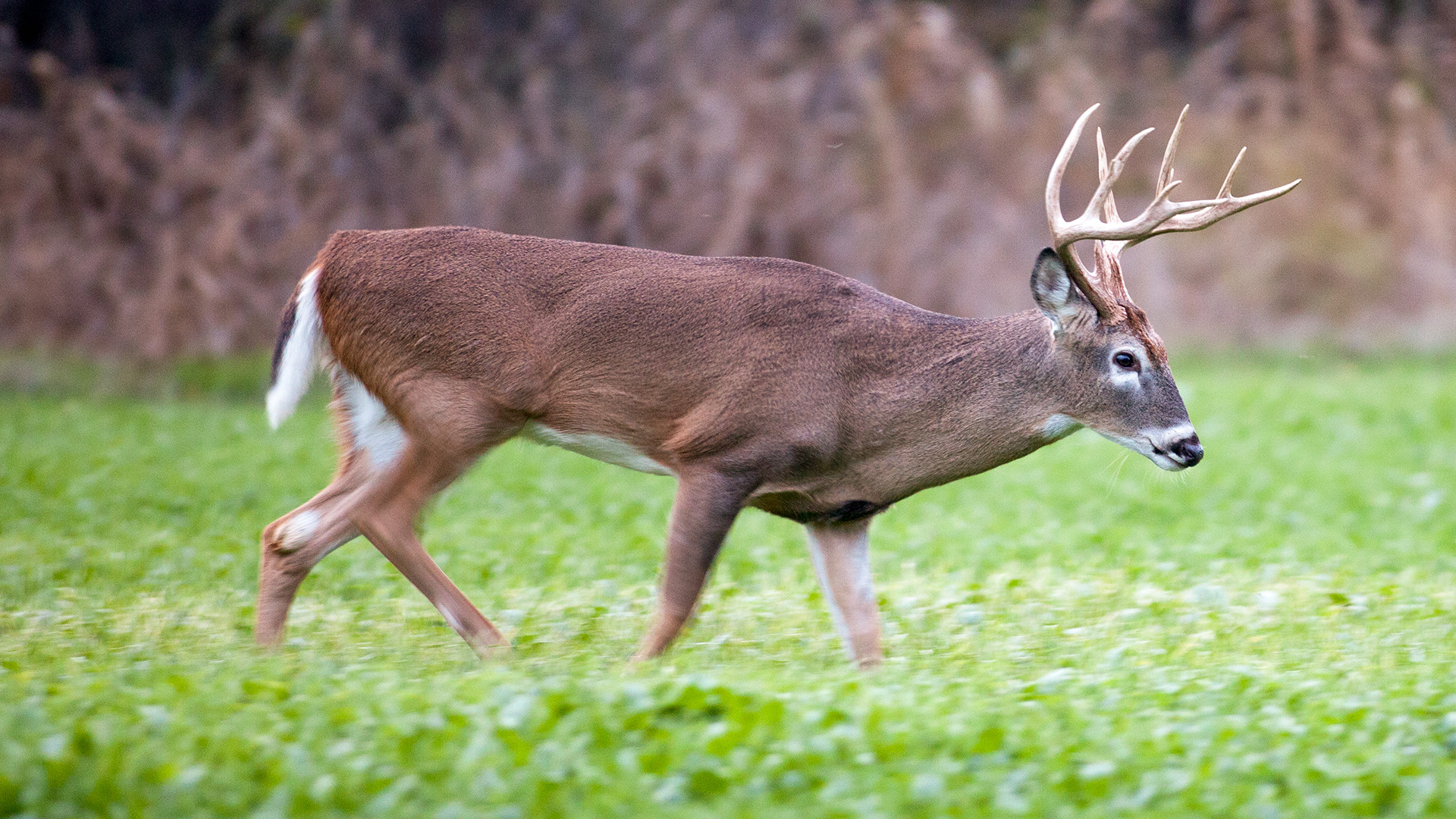
Unless you high fence your property, an expensive venture at best, keeping whitetails on your property becomes an impractical goal. Deer have home territories but adjust seasonally, and younger animals disperse naturally as part of a way to diversify DNA. Even so, do not call a hunting real estate company yet to list your property. You have options to sway deer to stay on your property most of the time, if not forever.

Don’t Hunt
Not hunting your property seems a bit drastic, but hear me out. Instead of running amok during hunting season, manage your hunting time, access approach and number of participants. Deer quickly adapt and change their behavior based on hunting pressure. Dozens of studies on deer over the years clearly reveal this behavior including one buck in a Penn State study that ascended a rocky ridge during hunting season to avoid hunting pressure.
Draft a hunting plan that includes low impact entrance into your hunting area, minimal exposure at the hunting site and the possibility of not hunting every day, particularly if the property is small. Larger properties allow you to rotate from hunting area to hunting area without focusing so much of your time at one location, thus decreasing the possibility of deer patterning you.
Sharing a hunting property with others also means managing others. If five of you always hunt on a weekend near an attractive food plot, it could prompt deer to move, maybe off the property. Again, spread out on a large property to diminish everyone’s hunting footprint. Another good way to control the hunting impact is to use an app like HuntStand. Create a group hunt area and utilize the stand reservation feature. Members can reserve hunting areas for specific times, share sightings and synchronize maps to make access management easy.
A final consideration is to put off culling until after the traditional hunting season. Nonstop bagging of antlerless deer adds to the busyness of a property, thus causing possible dispersal of deer from perceived hunting pressure.
Regardless of your approach, hunt the area as if nobody was hunting it and deer will feel more comfortable spending time there instead of on the neighboring property.

Have Food and if Not Food, Refuge
You have two inducements that offer a huge incentive for deer to stay on your property. Think food and refuge. Why not water? Unless you live in a near-desert environment, deer typically locate water sources on most properties, but add it if you have the resources. At minimum, a lush food plot and an isolated sanctuary on your property pump up deer confidence. And if legal, supplemental feeding adds to property attractiveness.
Food oftentimes equates to a huge expense. To minimize expense and create longevity in a food source, consider a perennial that rebounds each year. The two that top the list include clovers and alfalfa with chicory becoming a new fan favorite. In this inflationary era of high cost, perennials minimize the amount of field preparation required to plant annuals and that leads to less expense overall, including fuel. These wonder floras provide a consistent food source throughout much of the year (albeit they can become less palatable in winter) plus provide benefits to the soil. Decreased farming, spraying and fewer fertilizer treatments all add up to plots with power and longevity that do not drain your bank account.
Food plots may not be an option, but you can accentuate natural browse with the aid of a professional forester or diligent research. The hinge cutting of select trees and thinning of forest brush aids in deer having more access to natural browse, plus the open canopy nurtures new growth that deer adore.
Refuge goes hand in hand with your management of hunting pressure. Reducing the impression of hunting pressure and giving deer a no trespassing zone works to boost the self-confidence of deer on your land. Only you can determine how many acres to set aside for deer privacy, but many of the whitetail pros I know try to reserve at least 50 percent of a property as a deer-only area. In addition to setting no entrance boundaries, allow cover to grow up, add corn to food plot edges as a curtain and forgo forestry projects in isolated areas. All boost the staying power of deer.
Create an Illusion of More Deer
Deer beget deer. I use that phrase oftentimes while hunting a variety of species, but it holds truth. Seeing deer, especially repeatedly, has the power to attract more deer. Although you will not be able to go out and purchase deer to add to your property as an attraction to pull more deer in, you can create the impression of deer.

Deer scents placed strategically along trails, on food plot edges and along the perimeter of your sanctuary zone have deceptive capabilities. Deer may move to your property after losing their hideout from crop harvest, hunting pressure on adjoining properties, pre-rut shuffles or dispersion. Regardless, if they sense a consistent presence via scents and scent-laced mock scrapes, it boosts confidence. Many hunters hold off until the rut flares to disperse scents via drippers or scent wicks, but summer and early fall is not too soon to begin a sham to accentuate the herd.
The most efficient manner to disperse scents is by a dripper that activates during the heat of the day to drip scent and shuts off in the cool of the night. It saves you gallons on scent, plus hints to visiting deer that the other deer are stopping by during daylight.
Make a Plan for Next Year
As a closing thought, you may not have time to implement all these buck-attracting tactics this autumn. Do what you can and make a to-do list for next year to complete the job. These welcome mat strategies benefit all wildlife and are definitely more affordable than high fence.



































